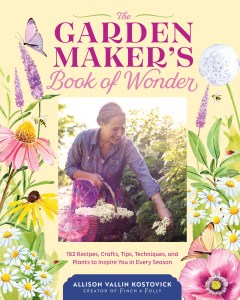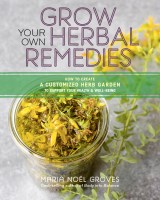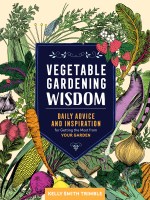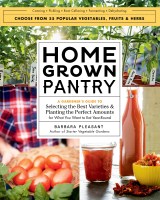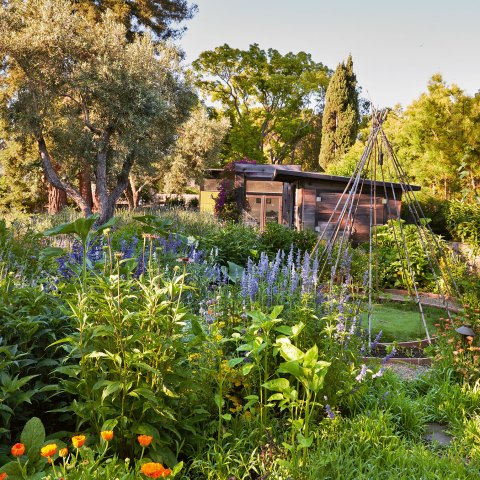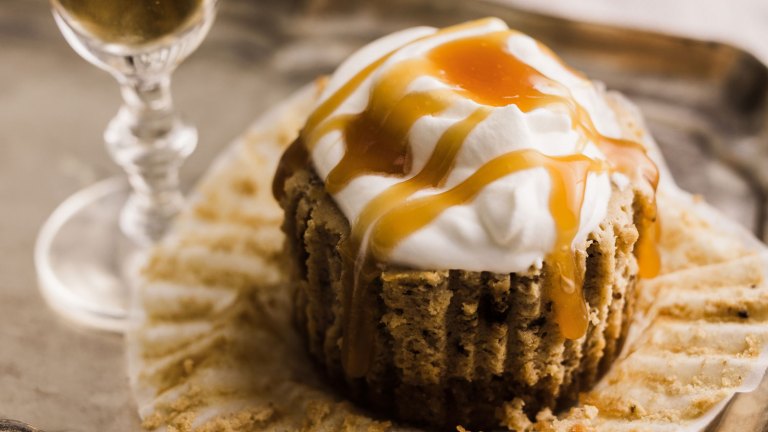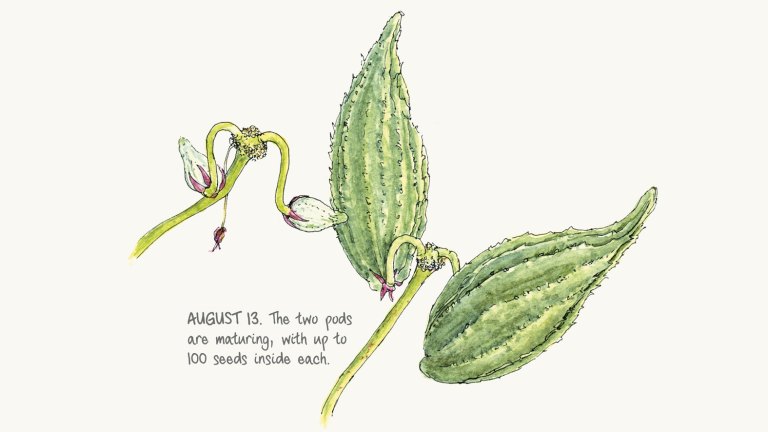How to Dry & Store Herbs
Preserve the flavor of fresh herbs—without any special equipment—then make delicious homemade herbal salt with advice from The Garden Maker’s Book of Wonder.
I prefer to air-dry my herbs, since exposing them to any type of heat zaps away some of their essential oil. Depending on the herb, I dry on screens, on racks, in baskets, or by hanging in bunches.
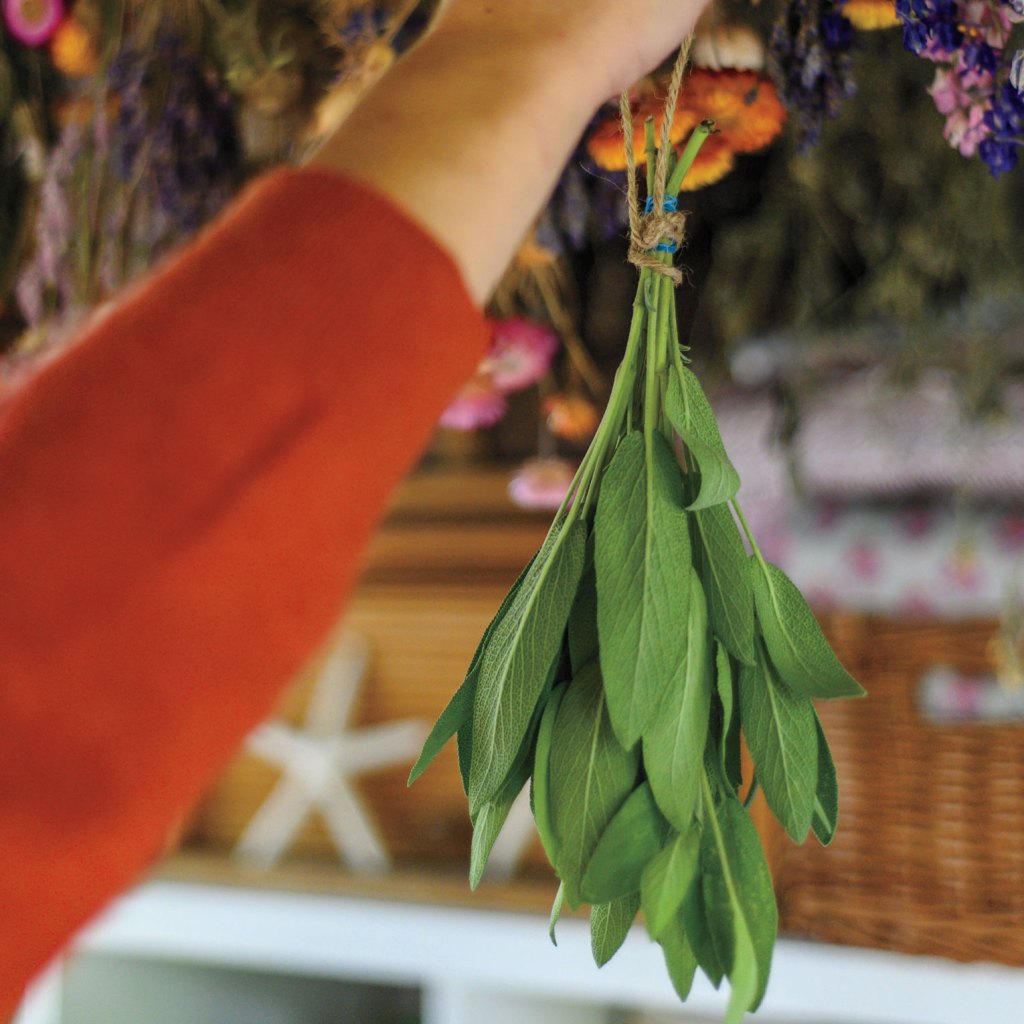
- Dry herbs in a humidity-free, well-ventilated room out of direct sun.
- If using a screen or rack, arrange herbs in a single layer for good air circulation; this also helps retain the herb’s color.
- Hang herbs like sage, lavender, catnip, oregano, and mint in loose, small bunches. (A benefit of hanging in bunches is that the herb’s essential oils flow down into the drying leaves.)
- When hanging herbs in bunches, avoid tying them tightly together; that could trap moisture and invite mold.
- Thicker-stemmed herbs are best dried flat.
- If you plan to store your herbs as hanging bunches, cover each bunch with a paper bag (punching a few air holes in the bag first) to protect it from dust.
- Check on your drying herbs every few days. For herbs drying on screens or in baskets, give them a good shake, toss, and inspection.
- When the herbs are easily crumbled (signaling they are completely dry), store them in glass mason jars.
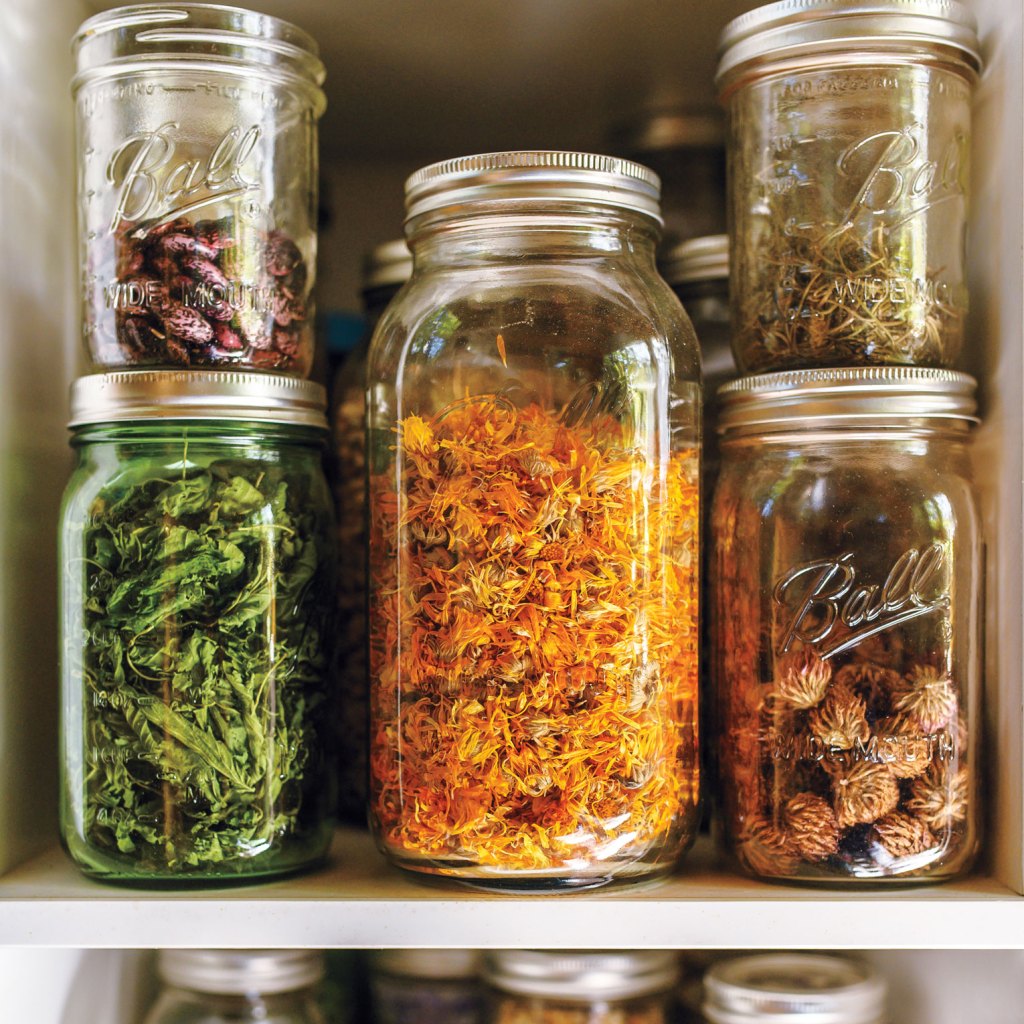
Other Tips for Drying Herbs
If you live in a high-humidity area or don’t have space to dry your herbs here, there, and everywhere, here are two other options.
Drying in a dehydrator. Set the dehydrator for a temperature between 95 and 110°F/35 and 43°C. Make sure you’ve blotted off any dew or moisture, then spread them out in a single layer on the racks. Some herbs dry in an hour; others take much longer. Just keep an eye on them. Once the herbs crumble to the touch, jar them up.
Drying in an oven. Set your oven to the lowest temperature possible, ideally around 100°F/38°C, although that’s hard to achieve with today’s ovens. The herbs will need some air circulation while in the oven, so prop open the oven door slightly with something nonflammable. Keep a close eye on your herbs and pull them out when they crumble between your fingers.
Storage. Store dried herbs in glass containers, checking them every week or so for the first few weeks to make sure all is well and there’s no hint of mildew in the jars. Put those precious jars in a cool spot out of direct light. Kept well, those herbs will easily last 6 months, with many keeping their flavor well up to 1 year. Over time, the herb’s flavor and scent will begin to fade. That’s when it’s time to jar up a new batch.
Use the stems! By the way, after stripping the tasty leaves from rosemary, oregano, mint, basil, and sage, don’t toss those stems. Rather, let them dry, then tie into bundles and use as aromatic fire starters for your woodstove, campfire, or fireplace.
Rosemary-Lemon Salt
Once you make your own herbal salt, you’ll never use regular salt again. This rosemary-lemon partnership is certain to please any dish it’s used on. Makes 14 ounces.
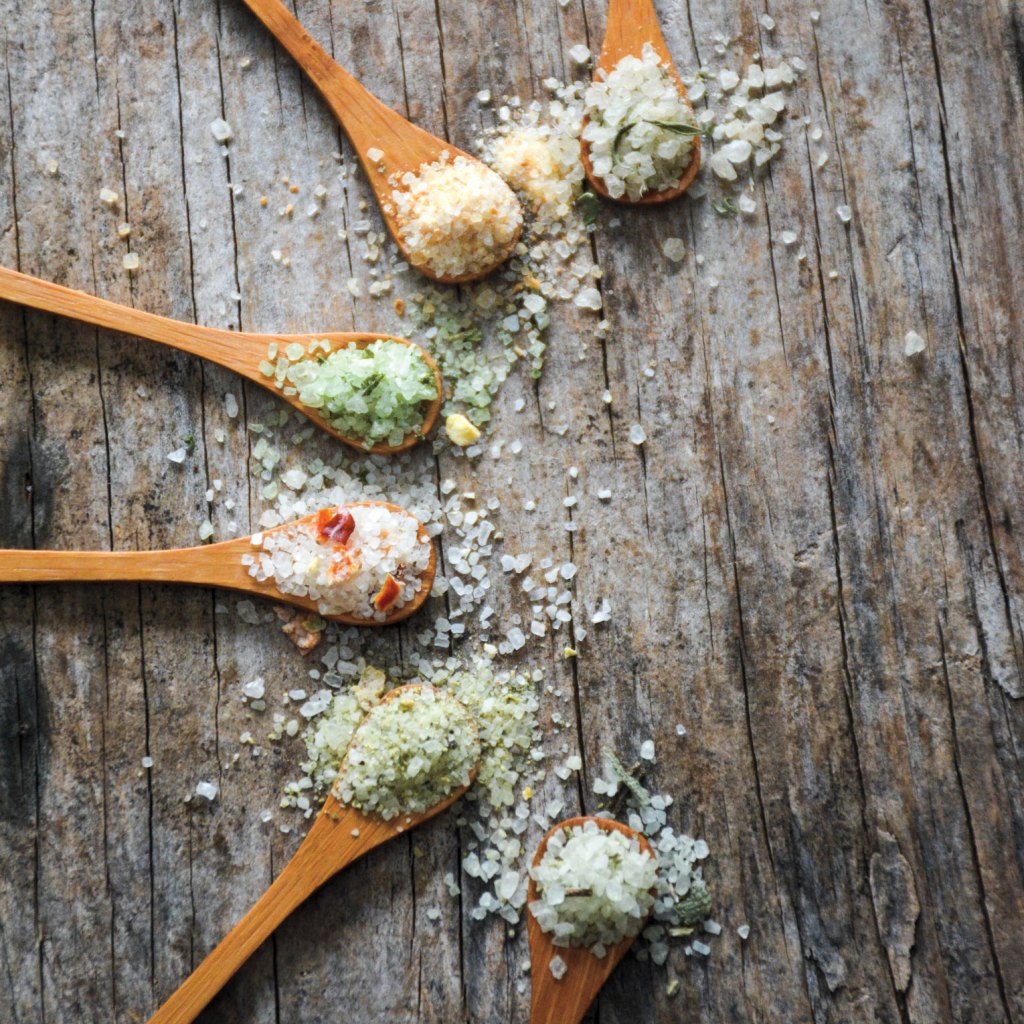
- 1 ½ ounces fresh rosemary leaves
- ½ ounce lemon peel
- 1 ¾ cups coarse sea salt
- 1 cup kosher salt
- ¼ cup fine sea salt
Place the rosemary, lemon, and 1/2 cup of the coarse sea salt in a food processor. Pulse several times to chop the herbs. Continue to add 1/2 cup of the salts at a time, pulsing after each addition until well combined.
Preheat the oven to 200°F/95°C. Spread the herb-salt mixture in a thin layer on a baking sheet. Bake for 1 hour, stirring and respreading the mixture with a spatula every 15 minutes, or until the rosemary leaves and salt are completely dry and crumbly. Let cool on the baking sheet. Once completely cooled, package in glass jars.
Excerpted and adapted from The Garden Maker’s Book of Wonder © by Allison Vallin Kostovick.
The joy and wonder of a garden-inspired lifestyle is captured in this colorfully photographed, through-the-seasons sourcebook filled with recipes, gardening wisdom, craft and wellness projects, and nature-based activities.
Each season in the garden brings new joy and fresh inspiration for connecting with the wonders of the natural world. In The Garden Maker’s Book of Wonder, popular gardening lifestyle influencer Allison Vallin Kostovick (Finch + Folly) invites fans of cottagecore, gardening, and nature-based living to share her journey as she crafts, cooks, dreams, and creates. Drawing on decades of gardening experience, and illustrated with vibrant photography from her own home and garden, The Garden Maker’s Book of Wonder offers sage advice on growing bountiful harvests of favorite vegetables, herbs, and flowers. All levels of gardeners, from dreamers to the experienced, will delight in the variety and creativity of Kostovick’s projects, activities, and recipes for enjoying the magic and whimsy of the natural world—no matter what season. From planting a pollinator playground to building a rustic trellis from tree branches, cooking with freshly picked peas and mint to making a sweet viola tub soak, and growing a bird seed mix to crafting one-of-a-kind jewelry beads from the husks of the Job’s Tears plant, the inventive ideas in this rich treasury are sure to make it a favorite to keep and to give to anyone who aspires to a more nature-connected lifestyle.
